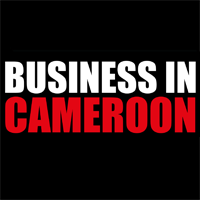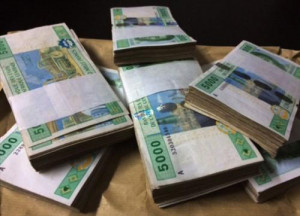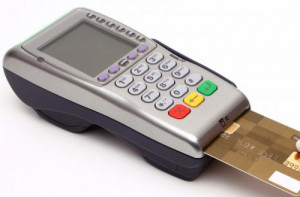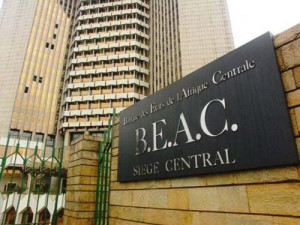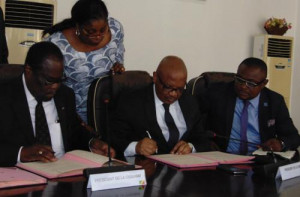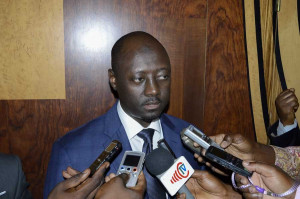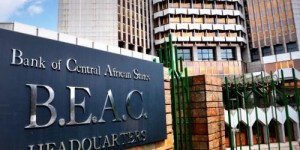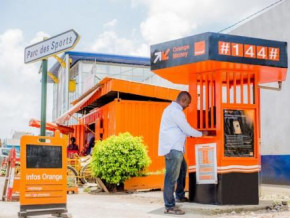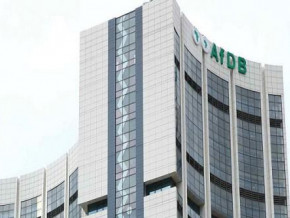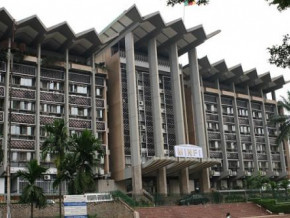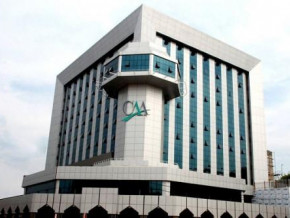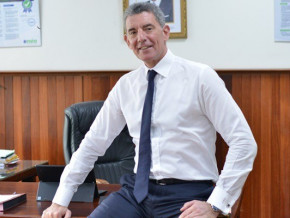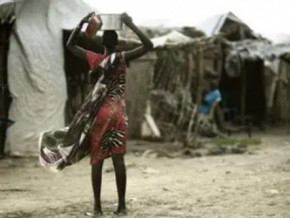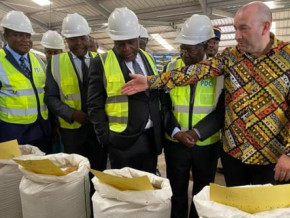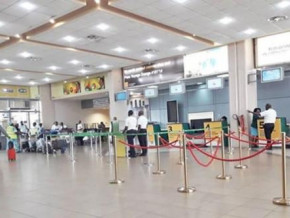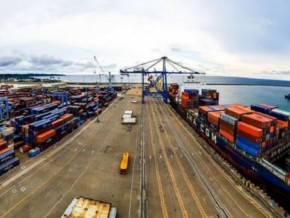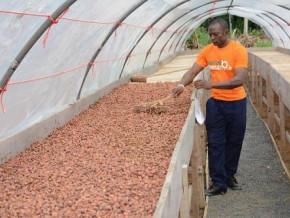
CFA1,216.6 billion raised on BEAC’s security market during Q1, 2018
During Q1, 2018, the public security issuances organized by BEAC grew by 36.6% to stand at CFA1,216.6 billion. This was revealed by the monitoring committee in charge of the règlement et de conservation des Titres (CRCT) which held its second general assembly in Yaoundé on June 28, 2018.
In comparison, the amount raised on this security market is about 25% of Cameroon’s budget (CFA4689 billion after the last budget meeting on June 4, 2014).
The CRCT explained that those are mainly short-term issuances and the interest rate required by the investors are ever increasing.
These increases can be explained by the high solicitations observed on BEAC security market since the end of 2015 due to the fall of commodities’ prices such as oil which constitutes between 25% to 85% of CEMAC countries’ public revenues. Therefore, to resolve their cash flow problems, those countries turn to BEAC’ security market which was created in 2011.
Brice R. Mbodiam
CEMAC countries made noticeable progress in the implementation of the public finance management guidelines, Pref-Cemac reveals
Obviously, CEMAC member countries have progressed in the implementation of the six harmonization guidelines for public finance management issued by the steering committee of CEMAC’s economic and financial reform program (Programme des réformes économiques et financières de la Cemac-Pref-Cemac). This was revealed during the fifth meeting of the steering committee held on June 22, 2018, in Douala and presided by Gilbert Ondongo, the Congolese economy minister and president of the steering committee.
These guidelines are issued for modern, efficient, transparent management in order to ensure that the data on public finance are comparable in the framework of the multilateral surveillance within CEMAC.
The comittee indicates that on a case per case basis, Cameroon transmitted all of the first drafts of the transposing provisions related to the guidelines. The committe has already issued a notice of compliance as far as four of those drafts are concerned on October 26, 2017. The country is also implementing the observations as far as the remaining two are concerned.
As for Gabon, Chad and Congo, they have already completed the transposing in their internal legal corpus.
As far as Central Africa is concerned, it has submitted the first drafts to the committee with a notice of compliance for all of them. The guidelines related to transparency and good governance in public finance’s management has been adopted in the country but, the five other are in the process of being adopted.
The last country, Equatorial Guinea transmited five drafts and the committee sent its observations on all the five texts.
S.A
CEMAC’s economies weakened by oil-dominated exports in 2017
In 2017, crude oil represented 70% of the overall exports within CEMAC. This was revealed by the Bank of Central African States BEAC in the latest report on price competitiveness within CEMAC in 2017.
According to the report, the product’s overall contribution to Real Effective Exchange Rate (REER) on real export earnings was around 80%. Due to this, CEMAC’s economies lost their competitiveness. Indeed, the Bank reveals that since 2015, the non-oil REER appreciated by 2.4% while the overall REER (oil included) depreciated by 8.1%.
The Bank notes that due to CEMAC members’ high dependence on oil exports, the price competitiveness’s evolution varies according to the country. Indeed, even though the non-oil REER appreciated by 2.4%, in Cameroon, it appreciated by 17.5% while in Congo, Gabon and Equatorial Guinea, it appreciated by 12.5%, 0.24%, and 0.36% respectively. In the remaining two countries, namely Central Africa and Chad, it depreciated by 1.5% and 0.21% respectively.
So, apart from Cameroon whose economy is relatively diversified, the other CEMAC countries which depend on oil exports' REER was either negative or weak.
Let’s remind that for years now, many international institutions such as IMF and World Bank invited the CEMAC countries to diversify their economies due to the free fall of oil prices (which highlighted the sub-region’s vulnerability).
S.A
BEAC’s CFA285 billion oversubscribed at 125% within 24 hours
Within 24 hours, actors of the CEMAC financial market subscribed at 125.28% to the CFA285 billion auctioned by BEAC on June 12, 2018.
Indeed, according to the auction report signed on June 13, 2018, by the bank’s vice-governor Dieudonné Evou Mekou, the bids received were worth CFA357.04 billion (a surplus of CFA72 billion compared to the nominal value to be auctioned) and the maximum interest rate is 2.95%.
This is a record for BEAC since the operation was due to last for 7 days (June 14 to 21) but was completed in just one day. It also translates the important need for liquidities on the sub-regional money market. This is, by the way, the reason why in 2017, the central bank set a scheme to provide urgent liquidities to the economic region’s banks with financial difficulties and allow those institutions with sufficient solvency level to face temporary liquidity tensions which could affect the sub-region’s financial stability.
S.A
BEAC to implement a new legal framework to oversee electronic transactions within CEMAC
This year, BEAC will implement a new legal framework for electronic payments within CEMAC. This was announced in a report the bank just published, focused on the state of these transactions in 2017.
According to the bank, this framework will correct some shortfalls on the system overseers’ responsibilities.
In the report, BEAC writes that the actors issuing electronic currency are unanimous on the fact that the current texts are silent on the development of some services (international transfers, microloans, micro-savings, and crowdfunding…). In addition, those texts do not address some crucial problems such as the proper way to contact the clients or register them.
The bank further notes that according to the current text, microfinance institutions cannot issue electronic payment despite being important tools in the financial inclusion. Therefore, the new framework will address this issue.
For the record, between 2017 and 2016, the electronic transactions within CEMAC have increased by more than CFA3 billion (CFA1,631 billion in 2016 to CFA4,700 billion in 2017).
Sylvain Andzongo
Cameroon held 61% of the funds CEMAC lodged in the French treasury as at 2017
In its 2017 annual report, the Bank of Central African States BEAC informs that Cameroon held 61% of the CFA2,551.8 billion the Central African region and BEAC had in the French treasury that year.
Namely, BEAC has CFA441.609 billion while Cameroon, Congo, and Gabon have CFA1,579.571 billion, CFA138.338 billion and CFA383.667 billion respectively. As far as Equatorial Guinea and Chad are concerned the balance of their accounts at the French treasury is negative: CFA-50.809 billion and CFA-118.421 billion respectively.
The bank informs that this increase (by 120.7%) of the funds lodged in 2017 is mainly due to partial transfer and the maturity of assets in its investment portfolio.
Let’s remind that this current account is the one opened by BEAC in the Ministerial Budget and Accounting control Unit of France’s ministry of finance. According to the agreements, BEAC should lodge 50% of all its external assets in that account. In the October 3, 2014, amendment to this agreement, the quota can be below 50% but it should not be less than 40%.
Sylvain Andzongo
CMF and COSUMAF set their merger transitional phase's terms
On April 11, 2018, in Congo, Nagoum Yamassoum, president of the COSUMAF, the central African financial market’s supervisor, and Jean Claude Ngbwa, the president of Cameroon financial market’s supervisor CMF, signed a cooperation and information exchange agreement. This agreement falls in the framework of the coming merger of Gabon and Cameroon’s stock exchanges.
In the transitional phase of this merger (which should be completed by June 30, 2019), COSUMAF and CMF committed to transmit, receive or exchange all the information and the documents deemed necessary to their respective missions.
According to article 3 of the said agreement, an operating license delivered by one of these institutions is recognized by the other and can be used in all the six member states of CEMAC. Therefore, the operator that received the license is no more required to apply for another one from CMF (if the license is delivered by COSUMAF) or COSUMAF (if the license is delivered by CMF).
Also, during the transitional phase, the institutions will apply the tariffs in force on the regional financial market. However, for services whose fees are not determined in the common market, CMF is free to apply its own tariff.
Moreover, for the peaceful coexistence of these institutions, they agreed to let either the president or a representative of one of them participate (as an observer) in the meetings of the other.
Let’s remind that this merger was decided on October 31, 2017, by heads of States of CEMAC and, it was also decided that the headquarters of this regional financial institution should be in Libreville, Gabon. The stock exchange of CEMAC (Douala stock exchange) being in Douala, this means that COSUMAF will absorb CMF and Douala stock exchange will absorb Libreville stock exchange (BVMAC) to finally create this regional financial market.
Sylvain Andzongo
CEMAC’s economy is out of the “danger zone”, according to BEAC’s governor
After a difficult 2017 economic year marked by a negative growth of the GDP (-0.1%), the economy of the six member CEMAC countries is gradually recovering.
“We are out of the danger zone. The economic environment is much better but the economies remain weak. This explains the various measures we are adopting”, said Abbas Mahamat Tolli, governor of BEAC at the end of the meeting of the monetary policy committee on March 21, 2018, in Yaoundé.
According to the governor, the slight improvement of the economy is due to the increase of commodity prices on the international market and of the production of crude oil. It is also due to the implementation of the economic, monetary and financial reforms prescribed in the Programme des réformes de la Cemac (Pref-Cemac) and of the programmes concluded with IMF by four member countries namely Cameroon, Chad, Gabon and Central Africa.
This year, BEAC forecasts a 2.1% of the GDP, against the -0.1% recorded in 2017. In the same document, it reveals that the inflationary pressure should stand at 1.8% against a community standard of 3%. As far as the external coverage rate of the currency (whose fall led to fears of depreciation some months ago) is concerned, it will rise to 64.2 %, from 57.5% in 2017.
Brice R. Mbodiam
CEMAC plans a system for the diligent payment of VAT refunds
The committee of CEMAC informs that it has sent task forces in the community’s member countries to investigate on the issue of VAT refund. Once the investigations are completed, the results will be shared and capitalized during the regional workshop which will be held in Libreville from March 5 to 7, 2018.
During the workshop, the community’s high officials will come to the rescue of the private sector by seeking solutions to the issue of VAT refund. “It is crucial to recreate a climate of trust in business and stop limiting the sub-region's companies’ ability to invest if we want national economies to renew with sustainable and balanced growth”, CEMAC indicates.
The committee reveals that in 2016, it set a new multilateral surveillance procedure to hasten the payments of part of VAT refund arrears. However, due to the unfavorable international economic situation, its member countries experience cash-flow difficulties and are thus unable to pay the VAT refunds.
S.A
Gabon and Cameroon to raise CFA20 billion on BEAC’s public security market
This day February 21, 2018, Cameroon and Gabon are once again trying to raise CFA20 billion on the public securities market of BEAC, official sources reveal. The two countries are trying to raise CFA7 billion and CFA13 billion respectively by issuing a 13-week maturity fungible bond.
Let’s note that since the security market of BEAC was launched in 2011, Cameroon and Gabon have been the major players. However, for sometime now, the market has become one of the remedies for CEMAC countries to raise money for their temporary cash problems. This is because public revenues have slumped partly due to the decrease in price of oil products since 2015.
BRM
Mags frontpage
- Most read 7 days
- shared 1 month
- read 1 month
